Godalming

Godalming Museum is small but crammed full of information. Quite often such places are all about face, information here and there all jumbled up. Others consist of someones collection of bits and bobs and not much else, these range from mildly interesting to far far too much eagerly collected information that over powers you and to appreciate them fully you’d need a year or two of concerted effort. Godalming Museum is very well thought out, packed with information should you choose to look it up.

There is a room dedicated to two locals, Edwin Lutyens and Gertrude Jekyll. Lutyens was a famous architect who adapted traditional architectural styles to the needs of his times, designing numerous country houses in the Arts and Crafts style, the Cenotaph in London and much of New Dehli, India.
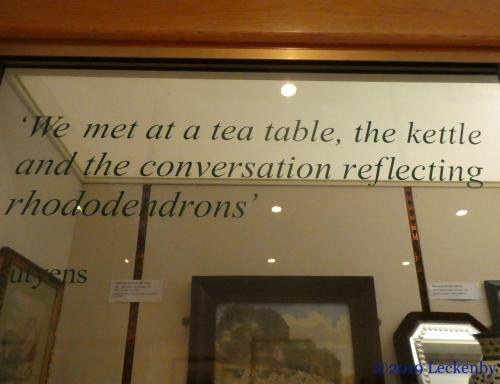
He was commissioned by Gertrude Jekyll to design Munstead Wood, a house for her and this was a start of their professional partnership. Gertrude would design the gardens that went long with Edwin’s houses, quite a package, if you could afford them.

The room is filled with sketches, cartoons and a scale model of what would have been a wonderful statue of Gertrude had it been made.

Upstairs are rooms about the history of Godalming. Shallow places on the River Wey encouraged the Saxons to settle in the area. The river also became a natural barrier for King Alfred holding back the Vikings and in WW2 pill boxes were built along it’s length. Mills played a large part in Godalmings history, with corn, fulling, paper, gunpowder mills and tanneries. In 1881 the River Wey powered the worlds first public electricity supply, but sadly due to flooding and technical difficulties the town returned to gas lighting three years later.
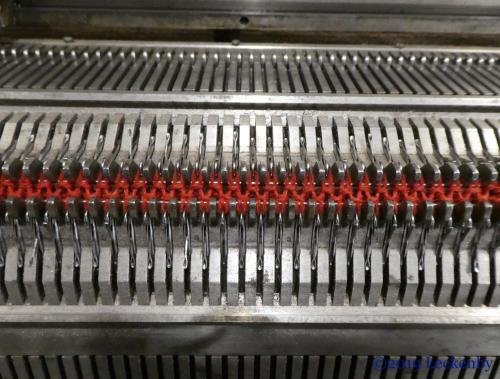
From the 17th Century Godalming became the centre of the framework knitting industry. Framework knitters worked long hours producing stockings in wool, silk and by the 1760’s cotton. Several framework machines are on display far more complicated than my knitting machine back in Scarborough. How I would love a sock knitting machine, giant french knitting for grown ups!

A wall of magnetised photographs of local people ‘The Peoples Gallery’, all collated as Artists, Heroes, Writers, Booksellers etc caught our eye. Just browsing through the photos you want to know why they were important. A computer and large lever arch files hold a lot of information about everyone. From Jack Philips the junior wireless operator on the Titanic, who learnt his skills at Godalming Post Office. To Galton and Simpson who wrote Hancocks Half Hour and Steptoe and Son. To Chennell and Chalcraft who were hung on 14th August 1818, on the Lammas Lands for murder and parricide. To Mary Tofts who gave birth to rabbits!


Mick managed to find details of Charterhouse School, where his Great Uncle Norman taught mathematics from 1909 to 1945. Sadly he wasn’t famous enough to manage to get on the People’s Gallery.
At 15:58 we stopped what we were doing and waited and watched as the clock mechanism from the old Town Hall wound itself up to chime 4 pm. Chains, whirling things and of course a bell sounded the hour.
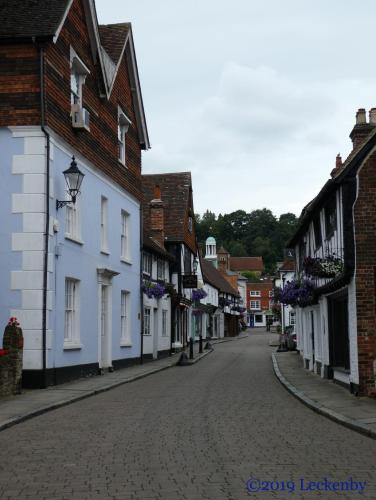
A large map adorned a wall of one of the archive rooms. This showed the layout of the town with illustrations of the buildings to be found there. On leaving the museum we decided to have a look at a couple of the streets that had looked interesting, so we walked down Mill Lane towards the station.

Pretty house after pretty house. The roses on the house at the end of Mint Street such a picture.

Further down one skewed property made me want to get a sketch book out to record it’s uniqueness, my photograph doesn’t do it justice, the lense removing the gingerbread quality it had.
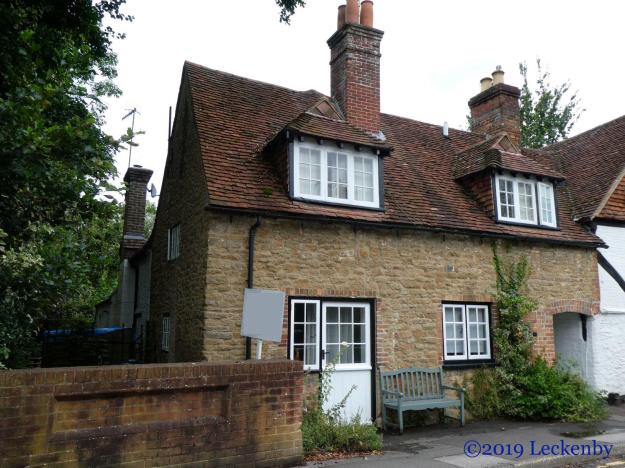
Property Game
A semi, it possibly floods every now and then.
An old mill sits by a mill stream, maybe this was where electricity was generated. The station sits proudly on the other side of the narrow valley, a KX telephone box from the 80’s spoiling the view along with modern ticket machines outside.
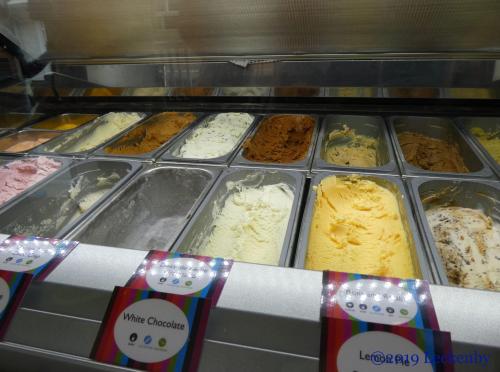
Plenty more properties delighted our eyes as we made our way back into the main shopping area. A sweet shop with chilled medication naturally drew us inside. Over the last few hot days we have had a distinct lack of chilled medication, so it was time to make up for it. Both opting for Salted Caramel cones, mine a gluten free one, the first I’ve tried. Despite the usual shrinking factor that tends to come with the lack of gluten and an extra 50p (!) it was just as crispy and tasty as a standard waffle cone.

0 locks, 0 miles, 2 trips into town, 2 hours at the museum, 8p short! 2 many knitting needles to count, 1 caseless clock, 15th century buildings, 2 many famous people, 1 very pretty town, 1 museum well worth a visit, 3rd shore leave in one day, 1 packet boat back on it’s mooring, 1 pram cover re-erected.

Yours also looks tastier! Good choice of flavour in my book. I think perhaps your fingers missed placed a letter and you meant a sweet shop! Mind you with the heat of late maybe you meant what your wrote!! We loved the Wey – it was almost home turf to us when we lived in Sussex. Chris’ parents used to live in Brookwood – the Basingstoke Canal was just over a busy main road, so we know parts of it on foot quite well, but have yet to make it by boat. Mainly, as in your case this time, due to lack of water. Jennie
Yes Jennie my fingers tripped up on the keyboard there. It got through the first proof reading, but was picked up on the post publication one. My chilled medication was far superior despite coming out of the same tub.
I love your descriptions of museums. You find the most fascinating stuff. Lutyens and Jekyll were indeed a dream combination.
Thank you Christine. A few more museums to visit this summer.